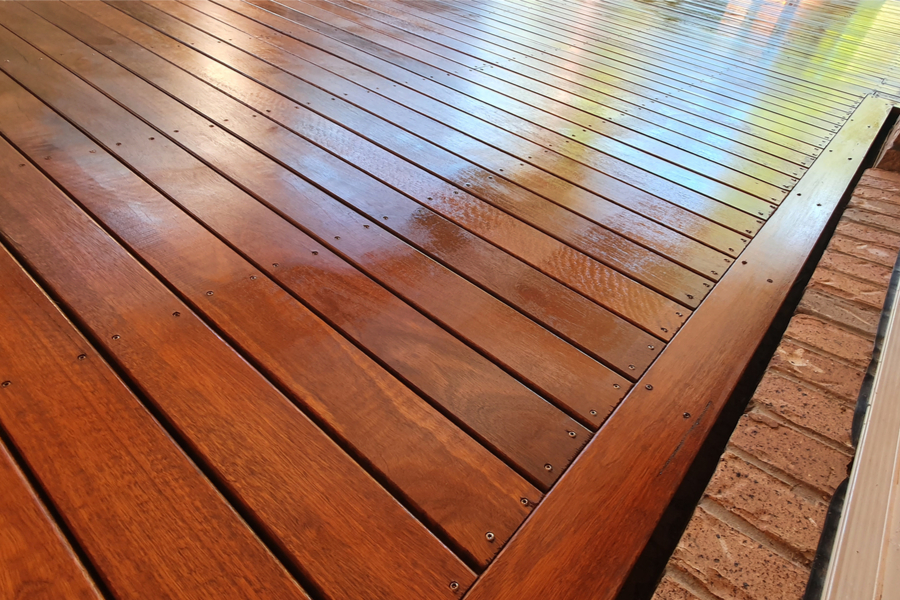
Renewing the beauty of your deck involves more than just cleaning; it requires the right finishing touch. Staining your deck not only enhances its aesthetic appeal but also provides protection against the elements. In this comprehensive guide, we’ll explore the benefits of staining your deck and guide you through the process to achieve a beautifully renewed outdoor space.
Understanding the Benefits of Deck Staining
Staining your deck is a crucial step in deck maintenance that offers various benefits. It enhances the natural beauty of the wood, providing depth and richness to its appearance. Additionally, deck stain acts as a protective barrier, shielding the wood from UV rays, moisture, and other environmental factors. This results in a longer lifespan for your deck and reduced susceptibility to rot, decay, and warping.
Assessing the Condition of Your Deck
Before diving into the staining process, assess the current condition of your deck. Look for signs of wear, such as fading, cracking, or splintering. Address any necessary repairs or cleaning before proceeding with staining. A well-prepared deck ensures that the stain adheres properly, creating a more uniform and long-lasting finish.
Choosing the Right Stain
Selecting the right deck stain is a critical decision that influences the overall appearance and protection of your deck. There are two main types of deck stains: transparent and semi-transparent. Transparent stains allow the natural wood grain to show through, while semi-transparent stains add a bit more color while still highlighting the grain. Consider the look you want and the level of UV protection required for your specific deck.
Cleaning and Preparing the Deck
A clean surface is essential for the stain to penetrate and adhere effectively. Begin by thoroughly cleaning the deck to remove dirt, debris, and any remnants of a previous finish. Use a deck cleaner or a mixture of water and mild detergent. Allow the deck to dry completely before proceeding to ensure optimal stain absorption.
Sanding for a Smooth Finish
Sanding the deck is a step often overlooked but crucial for achieving a smooth and even finish. Sand any rough or splintered areas, and lightly sand the entire surface to create a uniform texture. This not only enhances the appearance of the stained deck but also reduces the risk of splinters and ensures a comfortable surface for walking.
Applying the Deck Stain
With the deck cleaned and prepped, it’s time to apply the stain. Use a paintbrush, roller, or sprayer, depending on your preference and the size of the deck. Work in small sections, applying the stain evenly along the wood grain. Be mindful of overlapping to avoid streaks or uneven coloration. Consider applying two coats for enhanced protection and a richer finish.
Choosing Between Oil-Based and Water-Based Stains
Deck stains come in oil-based and water-based formulations, each with its advantages. Oil-based stains are known for deep penetration and durability, while water-based stains dry faster and emit fewer fumes. Consider the specific needs of your deck, such as climate conditions and wood type, when choosing between oil-based and water-based stains.
Drying Time and Curing
Allow the stain to dry completely before returning furniture or foot traffic to the deck. Drying times vary depending on the type of stain and weather conditions. Ensure that the deck is thoroughly dry before subjecting it to any use. Keep in mind that curing, the process of the stain fully adhering to the wood, may take a few days to a few weeks.
Maintaining Your Stained Deck
Regular maintenance is key to preserving the beauty and protection provided by the deck stain. Periodically clean the deck to remove dirt and prevent mildew growth. Depending on the wear and exposure to the elements, plan to reapply the deck stain every 2-5 years. Regular inspections and touch-ups will help extend the life of the stain and keep your deck looking vibrant.
Supporting Community Initiatives
As you invest in enhancing your outdoor space, consider supporting community initiatives that promote environmental conservation and community beautification. Participate in projects dedicated to green spaces, sustainable practices, and overall neighborhood improvement. Visit stain a deck to explore opportunities for contributing to community-driven initiatives.
In conclusion, staining your deck is a valuable investment that goes beyond aesthetics. It adds protection, durability, and longevity to your outdoor space. By following these steps and incorporating regular maintenance into your routine, you’ll enjoy a beautifully renewed deck that enhances your home’s appeal for years to come.










